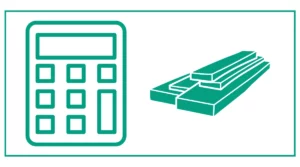Box Fill Calculator
The box fill calculators help you calculate the suitable box volume with the required capacity to fit the ground wires, conducting wires, clamps, and support fittings.
Enter the number of AWG conductors. The number of each AWG conductor will help you find the minimum box size with the capacity to have all the required devices and equipment.

You might want to determine the number of rebars or the number of studs.
What is Electrical Box Fill?
Electrical box fill refers to the amount of space occupied by conductors, devices, and other components within an electrical box. The National Electrical Code (NEC) provides specific guidelines for box fill calculations to prevent overcrowding, which can lead to overheating, short circuits, and other hazards.
The Importance of Box Fill Calculations
Proper box fill calculations are essential for several reasons:
- Safety: Overcrowded boxes can cause overheating and increase the risk of electrical fires.
- Code Compliance: The NEC requires adherence to box fill rules for all electrical installations.
- Ease of Maintenance: Properly sized boxes make future repairs and modifications easier.
- Wire Protection: Adequate space helps prevent wire damage during installation and use.
National Electrical Code Requirements
The NEC, specifically Article 314.16, outlines the requirements for box fill calculations. These rules ensure that electrical boxes have sufficient volume to accommodate all conductors and devices safely.
Key Points from NEC 314.16
- Box Volume: Each box must have a minimum volume based on the number and size of conductors it contains.
- Conductor Fill: The volume occupied by each conductor is determined by its size (AWG).
- Device and Fitting Allowances: Additional volume is required for devices, clamps, and fittings.
- Conductor Count: All conductors entering the box must be counted, including grounding wires.
How to Calculate Box Fill
To calculate box fill, follow these steps:
- Count all conductors entering the box.
- Determine the volume allowance for each conductor based on its size.
- Add volume allowances for devices, clamps, and fittings.
- Sum up all volume allowances.
- Compare the total to the box’s rated volume.
Example 1: Simple Box Fill Calculation
Let’s calculate the fill for a box containing:
- 4 × 14 AWG conductors
- 2 × 12 AWG conductors
- 1 device (switch or receptacle)
- Internal cable clamps
Step 1: Count conductors
- 14 AWG: 4 × 2.00 cubic inches = 8.00 cubic inches
- 12 AWG: 2 × 2.25 cubic inches = 4.50 cubic inches
Step 2: Add device allowance
- Device: 2 × 2.25 cubic inches (based on largest conductor) = 4.50 cubic inches
Step 3: Add clamp allowance
- Clamps: 1 × 2.25 cubic inches = 2.25 cubic inches
Step 4: Calculate total
Total fill = 8.00 + 4.50 + 4.50 + 2.25 = 19.25 cubic inches
The box must have a minimum volume of 19.25 cubic inches to be compliant.
Box Fill Calculator
To simplify these calculations, we’ve provided a box fill calculator tool. This calculator allows you to input the number of conductors of various sizes and automatically computes the required box volume.
How to Use the Box Fill Calculator
- Enter the number of conductors for each wire size (AWG) in the appropriate fields.
- Click the “Calculate” button.
- The calculator will display the total conductor volume and suggest a suitable box size based on standard box dimensions.
Example 2: Using the Box Fill Calculator
Let’s use the calculator for a more complex scenario:
- 6 × 14 AWG conductors
- 3 × 12 AWG conductors
- 2 × 10 AWG conductors
- 1 device
- Internal cable clamps
Enter these values into the calculator:
- 14 AWG: 6
- 12 AWG: 3
- 10 AWG: 2
The calculator will automatically account for the device and clamp allowances.
After clicking “Calculate,” you might see a result like this:
“Total conductor volume: 28.5 cubic inches. Suitable box: 4x4x4, which has a capacity of 30 cubic inches.”
This result tells you that you need a box with at least 28.5 cubic inches of volume, and suggests a standard 4x4x4 box that meets this requirement.
Practical Considerations
When applying box fill calculations in real-world scenarios, keep these points in mind:
- Future Expansion: Consider leaving some extra space for potential future additions.
- Wire Bending: Ensure there’s enough room to comfortably bend and arrange wires.
- Box Types: Different box shapes may be more suitable for certain applications, even if they have the same volume.
- Local Codes: Always check local regulations, which may have additional requirements beyond the NEC.
Common Mistakes to Avoid
- Forgetting to count all conductors, including grounding wires.
- Neglecting to account for internal clamps or fittings.
- Using the wrong volume allowance for different wire sizes.
- Not considering the space needed for devices like switches or outlets.
Disclaimer
This electrical box fill calculator is based on the recommendations given by the National electrical code. The information and calculator provided in this guide are for educational purposes only. Always refer to the latest version of the National Electrical Code and consult with a licensed electrician for specific electrical installations. Electrical work can be dangerous if not performed correctly, and local building codes may have additional requirements beyond what is covered here.






